How to Choose the Best Camera for Safari [Buyers Guide]
Heading on a safari? Congratulations! Here’s how to choose the best camera for safari and trekking adventures. We also include a detailed Buyers Guide that breaks down the 9 primary considerations when deciding on a camera for your upcoming African safari.
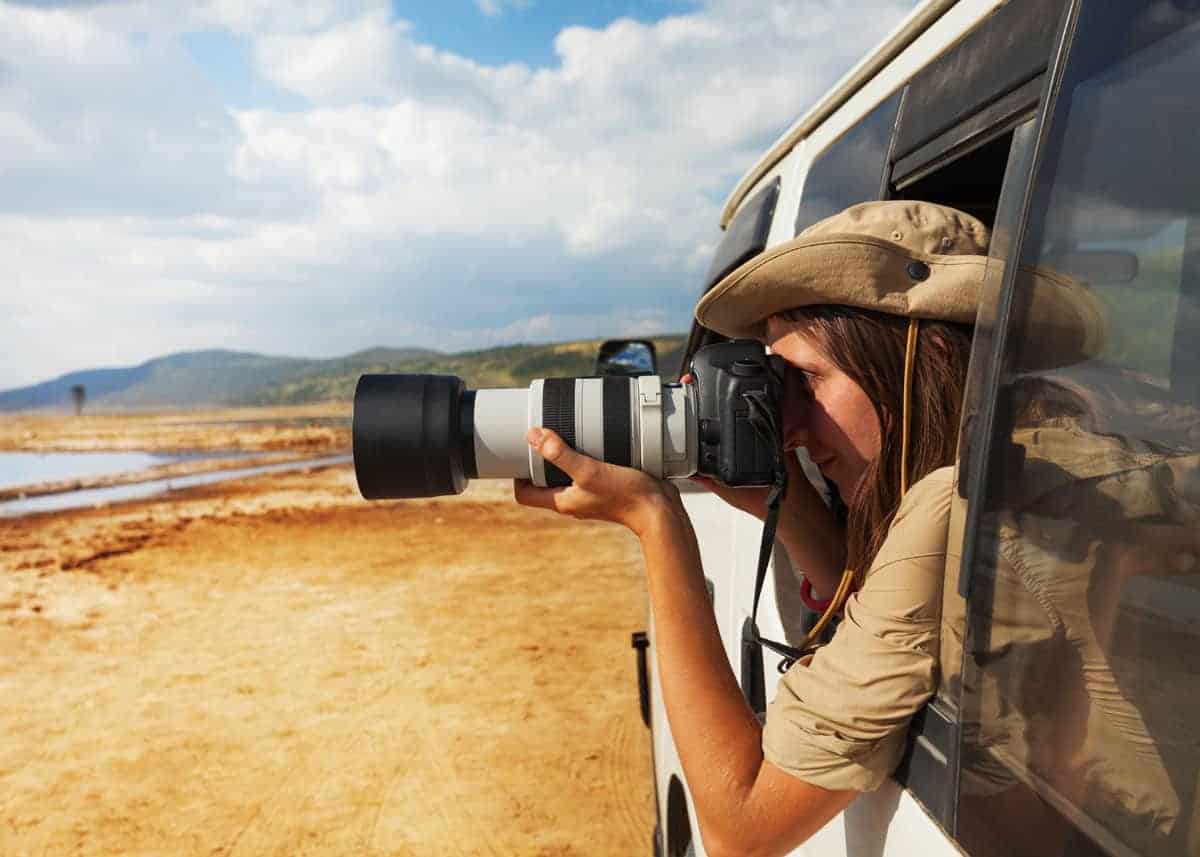
What else should you bring? Don’t forget anything with our Complete African Safari Packing List
Choosing the Best Camera for Safari [Buyers Guide]
What type of camera will you bring on your African safari? Taking photographs is a must while you are out in the bush. If you don’t want to get stuck with sub-par pictures, stay tuned.
This article will walk you through the considerations and types of cameras for a savannah or jungle adventure. By the end of this post, you will be able to pick out the best camera for safari fun!
This guide is divided into four main sections:
- Buyers Guide: Choosing the Best Camera for a Safari
- 6 Types of Camera for Safari Photography In this section, we’ll cover point and shoot, smartphone, superzoom cameras, DSLR, mirrorless, and action cameras (GoPro).
- 14 Safari Photography Tips
- Gear for Safari Photography
But first, here are a few wildlife photography tips and tricks.
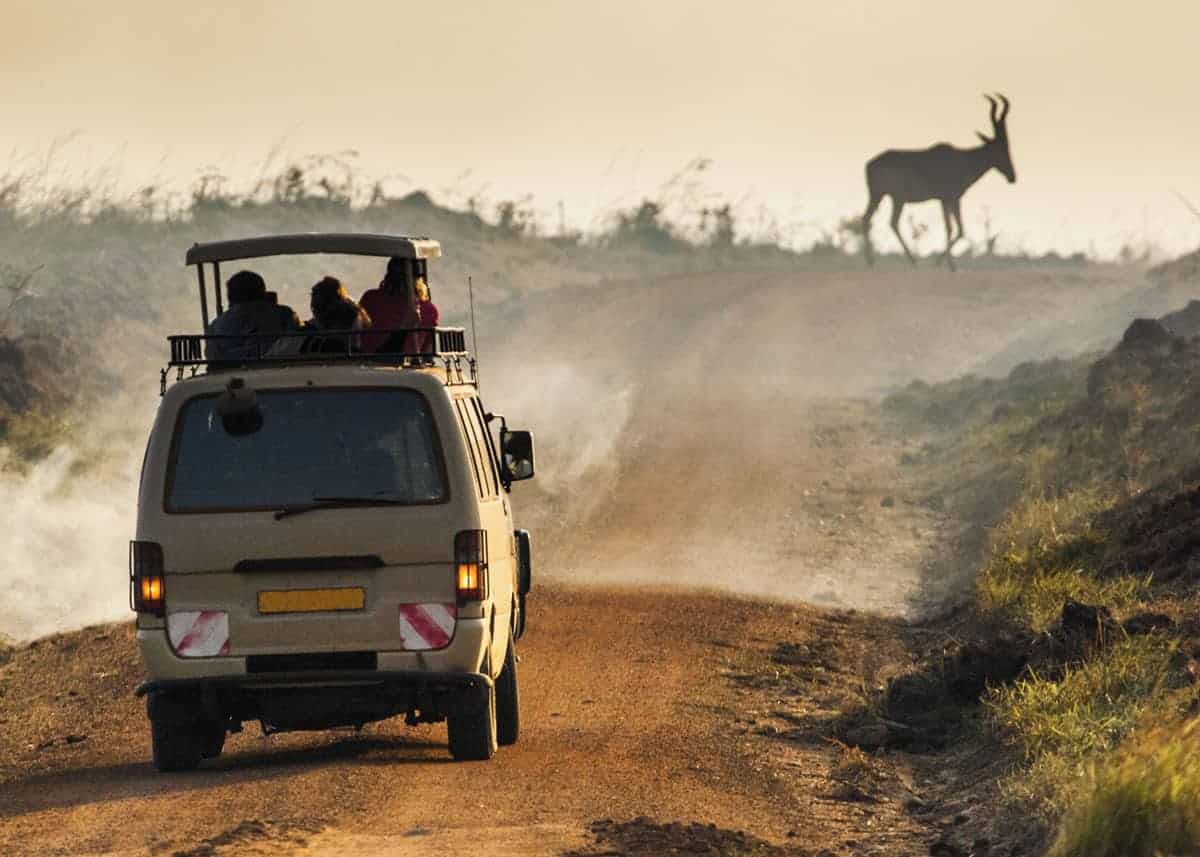
Going birding in Uganda? Check out our guide to the birds of Uganda (including the top birding sites)
Buyers Guide: Choosing the Best Safari Camera
Here are the features you need to know about as you decide which type of camera to bring on your safari or trek.
- Durability (Waterproof and Shockproof)
- Weight and Size
- Ease of Use: Features and Functionality
- Lens: Zoom or Wide Angle Lens
- Frames per Second (FPS)
- Connectivity: WiFi, Bluetooth, NFC
- Battery Life
- Sensor Size
- Cost
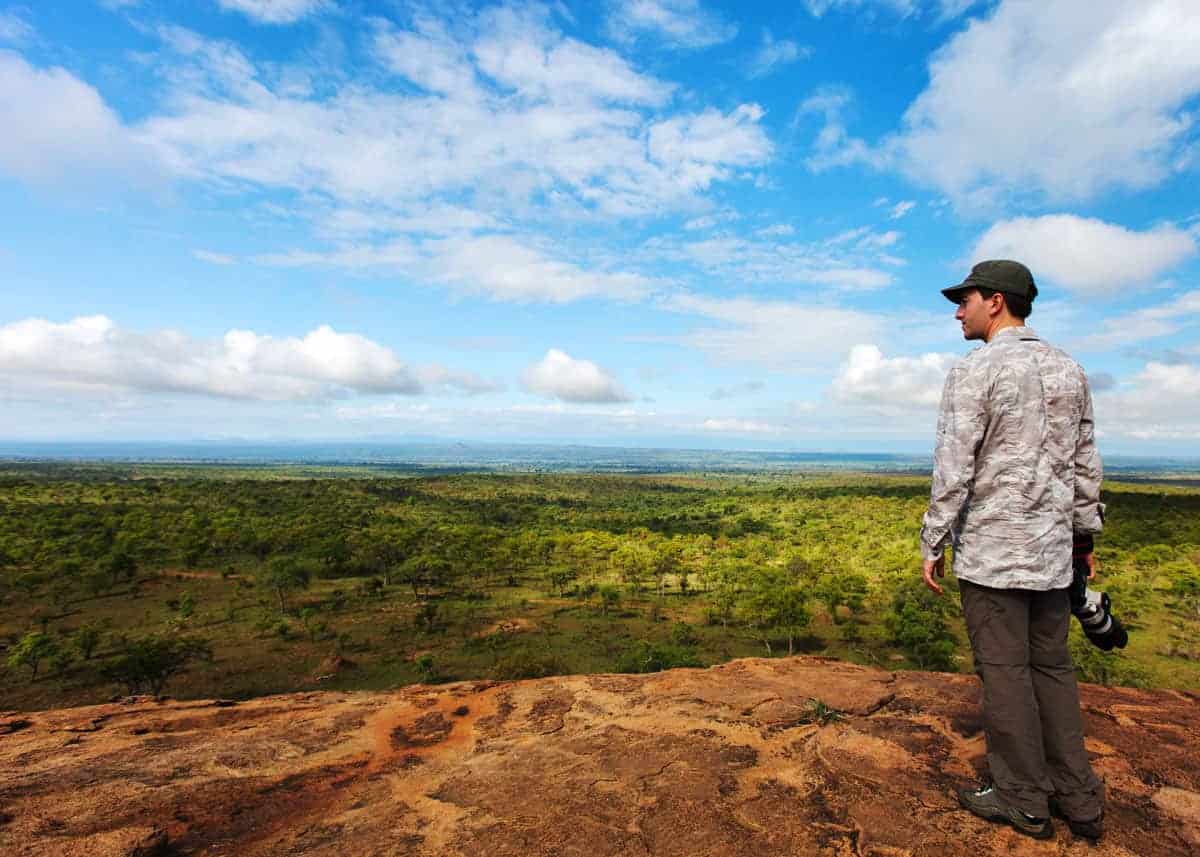
Uganda Climate Guide: Best Time to Visit (Weather, Rain & Temp by Month…)
1. Durability: Waterproof / Shockproof
The best camera for safari will take the weather into account. The African grasslands can be a rough place for humans and animals, but it takes an even greater toll on technology. Dust and debris are one of the weather hazards you will encounter on your adventure.
- Dust: If you are taking a vehicle tour, you will definitely need a dustproof camera. Even on walking tours, the dry dirt blows in the wind.
- Rain is another factor to consider. During the dry season, you still run the chance of getting caught in a downpour, and when it rains in the jungle, it pours. If you get wet you will most likely be extremely wet, so choose a camera that has exceptional waterproofing. And if you are heading on a gorilla safari, moisture will be a factor.
- Shock: A final factor to consider isn’t necessarily due to the weather, but it will affect your camera: shock. Hopefully, nobody drops your camera, but keep in mind it does happen. Although by using your neck strap you reduce the chances of an accidental drop, keep durability in mind as you make your choice.
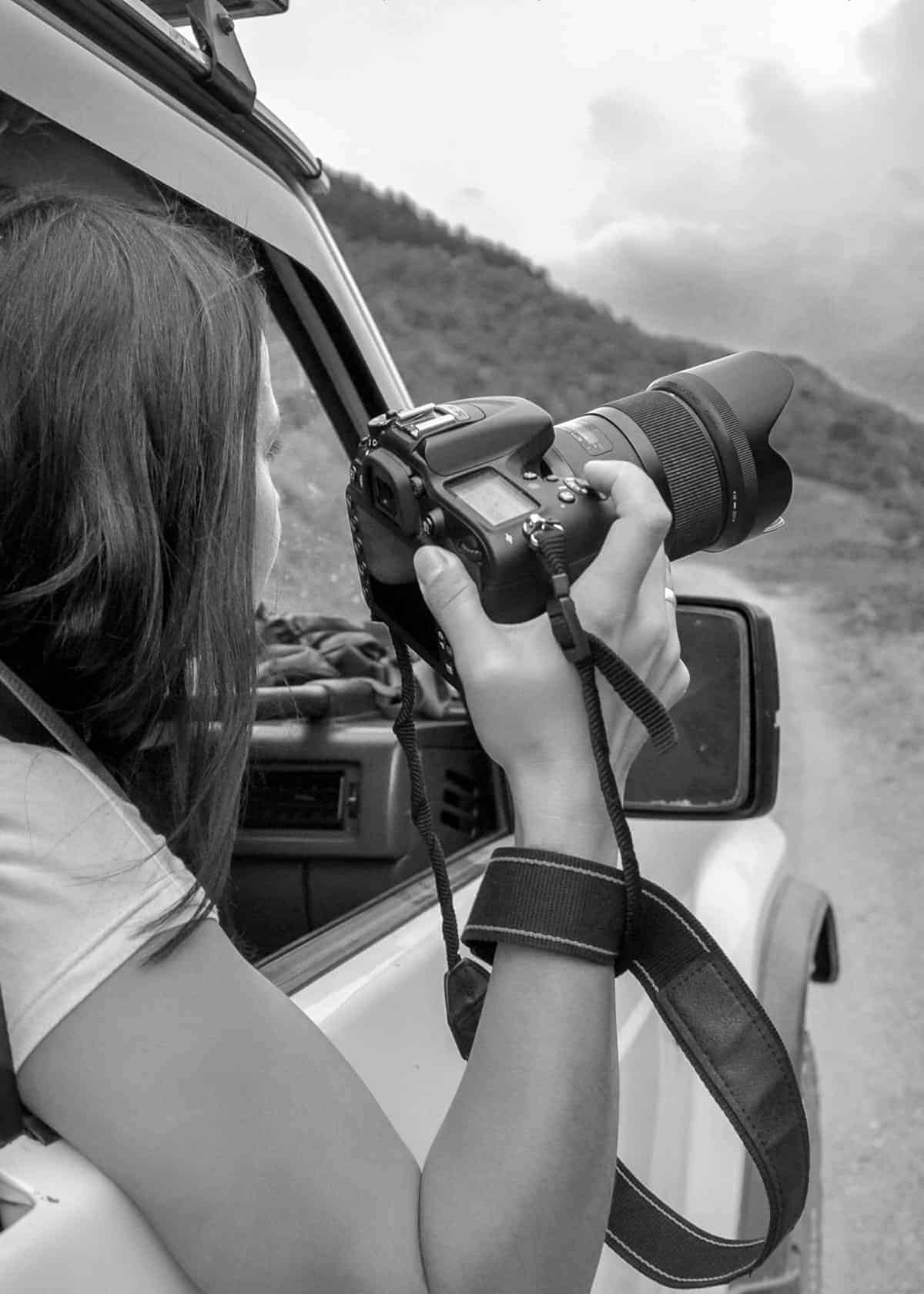
2. Weight and Size
When traveling to and around Africa for a safari, there are weight limitations. If taking bushcraft, your suitcase may have to weigh as little as 33 pounds. That doesn’t leave much room for anything extra, especially if you want to bring back souvenirs.
Therefore, your best camera may be lightweight. This will also reduce pressure on your neck since most safaris last most of the day and/or multiple days. Finally, a lighter camera will most likely be smaller.
As a tourist, you are a prime target for pickpockets and thieves. Something lightweight and compact comes in handy for the times you don’t want people to know what you are packing.
Of course, with a lighter-weight camera, you’ll sacrifice some function. You’ll need to find a balance between weight and image quality.
This leads us to our next point: ease of use.
3. Ease of Use: Functionality and Features
Not all cameras are equally easy to use. In fact, manual photography settings can take weeks (or even months) to learn properly. Depending upon practice time, you may want to think about investing in one that is easy to use.
Unfortunately, the most difficult cameras are typically thought of as the best cameras for safari photography. This leads to less-than-stellar pictures due to user error. If you are new to photography with little time you should definitely consider automatic options.
Some features to consider are:
- Image stabilization (anti-shake)
- ISO ratings
- Connectivity
- Burst mode
- Lens availability/compatibility
- Preset modes
- Shoot in raw and jpg
- LCD Size
- Time-lapse
- Touch screen autofocus
- Creative auto settings
Need some help understanding digital photography? Check out Tony Northrup’s How to Create Stunning Digital Photography. It’s a great introduction to go from absolute beginner to amazing shots. It comes with 14 hours of training videos.
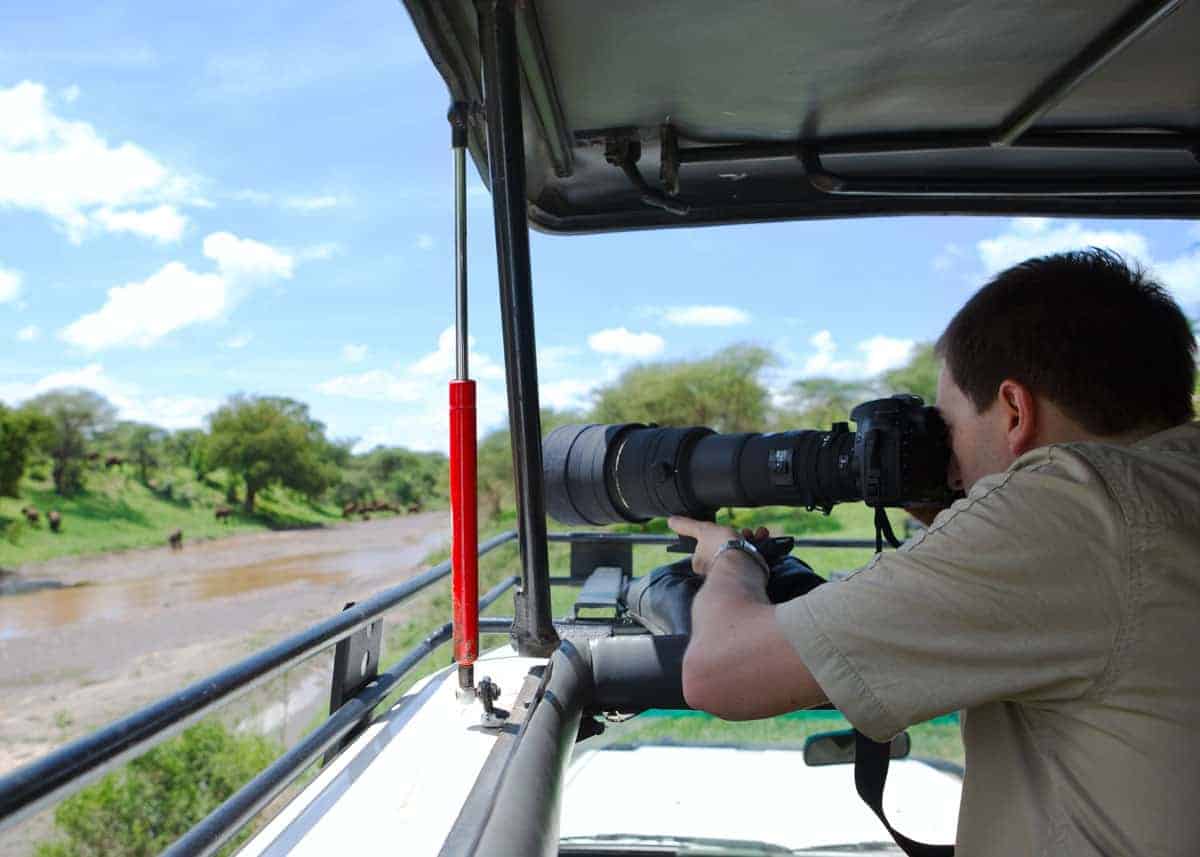
More reading: Travelers Guide to the Best Anti-theft Gear
4. Lens: Zoom or Wide Angle Lens
When choosing the best camera for a safari, there are a couple of things to keep in mind. You’ll probably be shooting a mix of both animals and landscapes.
The better the zoom, the better your shots of animals. If you want good pictures, you need to choose a lens that allows for close-ups of unapproachable animals, like an African lion lying far in the distance. Pick a camera/lens that will allow you to capture the details your naked eye is missing out on.
On the other hand, African safaris offer photo opportunities for gorgeous, otherworldly landscapes. If you want to capture these once-in-a-lifetime views, you need a camera that has a wide-angle lens. However, the wider the lens angle, the less zoom. What should an African safari-goer do?
In order to get the best photos and leave with no regrets, don’t force yourself to choose.
Instead of having to pick between lovely landscapes and awesome animals, there is a solution: multiple lenses! The best option will have multiple lenses.
It will consist of a wide-angle lens for the savannah and a tight-angle lens for close shots. This lens distance is measured in millimeters.
Short-length lenses (less than 50mm) are best for landscapes, and long-length lenses (135mm and up) are best for close-ups. I love my Tamron 16-300mm lens– it combines the best of both – a wide angle and a decent zoom length.
Of course, not all cameras have interchangeable lenses. For this feature, you’ll want either a DSLR or a mirrorless camera.
Action cameras (like GoPro) have no zoom and no lens add-ons.
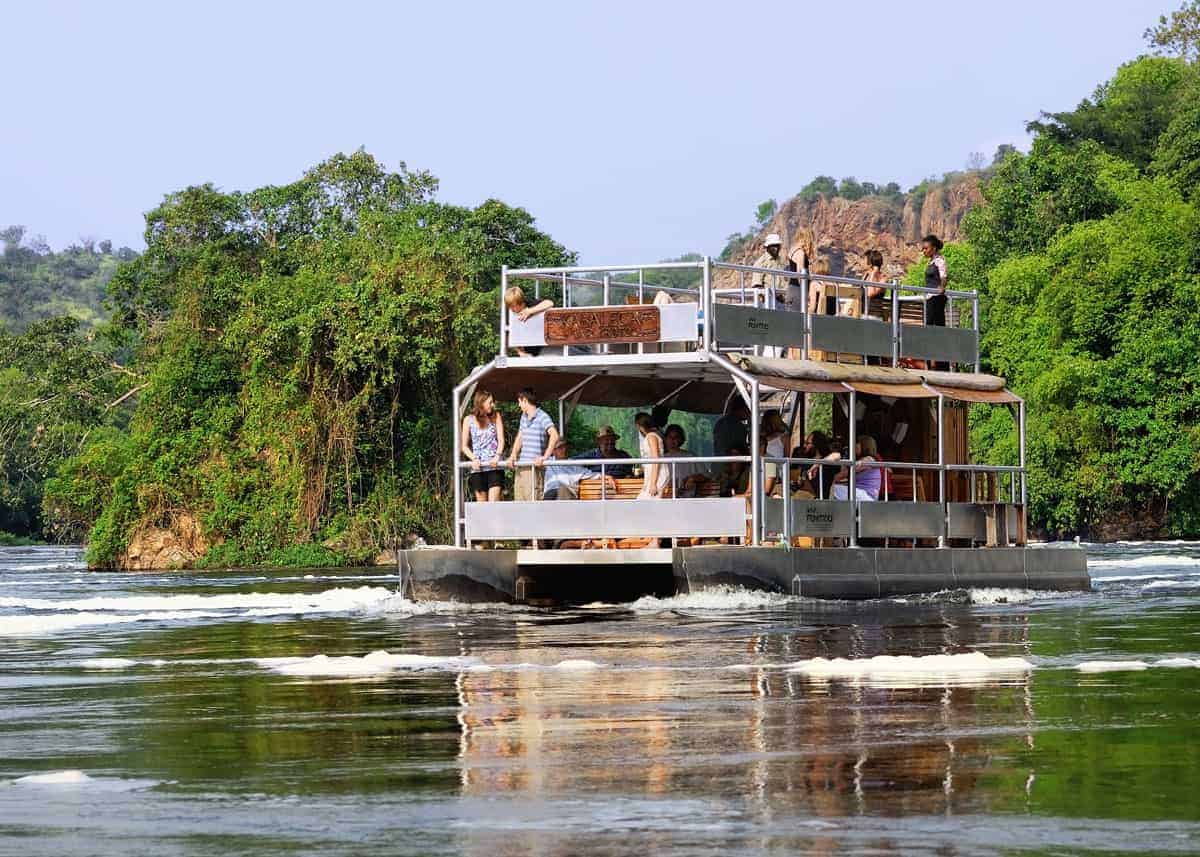
5. Frames per Second (FPS)
FPS is an important factor to consider when choosing the best camera for safari. The more frames per second, the more pictures your camera takes in one second.
Landscapes and slow-moving things do not need a high number of FPS, but fast-moving animals do. The more photos being taken, the better chance you have of capturing a flawless memory.
Since most animals you will encounter are quick (zebras, cats, antelope, etc.) you want as many frames per second as possible.
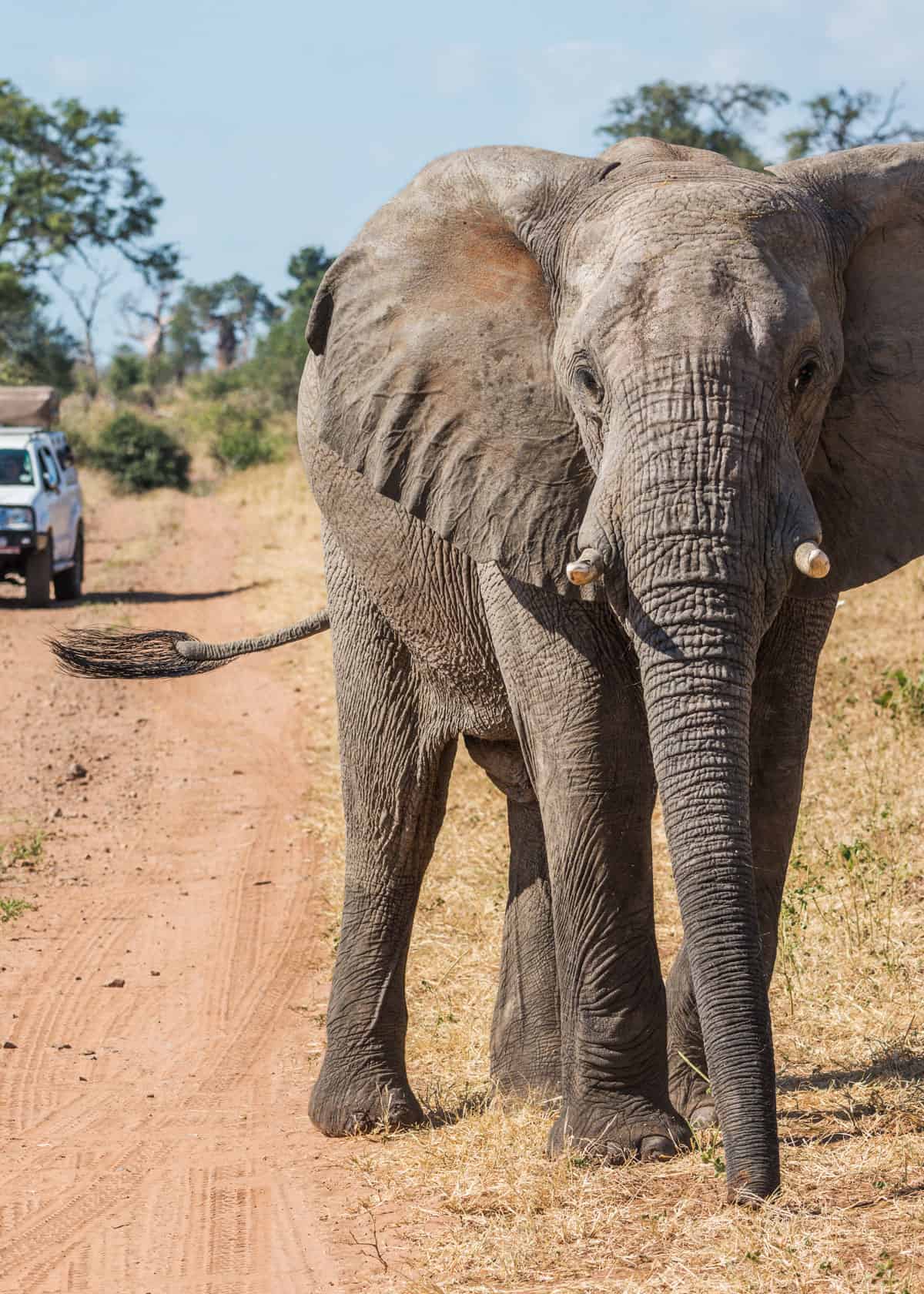
We recommend picking up a travel insurance policy before traveling to Africa. It can cover surprise visits to a medical clinic and protect your belongings should they get lost or damaged.
6. Connectivity: WiFi with NFC, and Bluetooth
These are some great features for control and file transfer.
- Control: Integrated WiFi control from your smart device will allow you to adjust your camera’s settings, including zoom, white balance, focus point, ISO, exposure compensation, and of course, firing the shutter.
- File Transfer: You can also wirelessly transfer images and video via WiFi with NFC from your camera to your phone. Bluetooth is also a great way to transfer images and provides some limited camera controls. It is popular because it consumes less energy than a WiFi connection.
What is NFC? This stands for Near Field Communication. This allows data to be transferred between two devices (ie. phone and DLSR) when they are very close to each other.
7. Battery Life
Don’t forget to check the battery life of specific models. We have many Canon cameras (7 at last count – camcorder, DLSRs, and point-and-shoots). A couple of years ago we bought a pair of decent point-and-shoots as backup cameras.
As it turned out, that model had a software glitch that gave low-battery warnings whenever shooting video. If we had read the reviews more thoroughly, we would have found this and bought a different model.
It’s worth checking the availability of additional batteries before ordering your new camera. Many cameras have a great selection of aftermarket battery brands for a fraction of the price. I’ve found that some of these come with an even higher capacity than direct from Canon or GoPro.
And don’t forget about power banks. They are great for charging batteries on the go. I’m a fan of Anker power banks.
The PowerCore 20100mAh is a beast – charging iPhone 7 almost 7 times – but weighs just 12.5oz. With the power bank, you can just plug the charger in, put it in your pack, and it will be charged in a few hours.
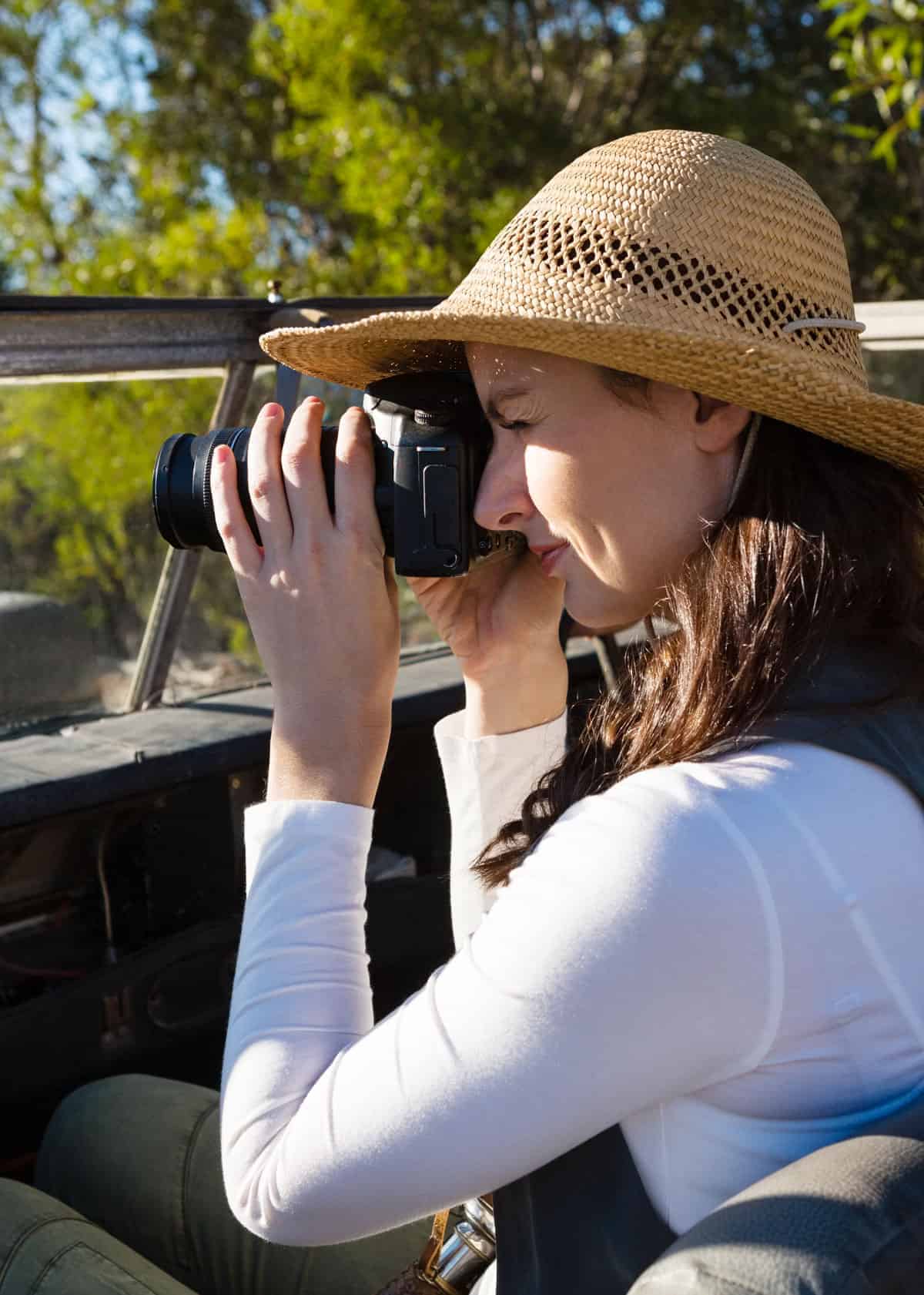
8. Sensor Size: Light Sensitivity Chip
The camera’s sensor is what captures the light and creates a digital image. The sensor is light-sensitive and can have a huge influence on the photo quality.
That being said, if you have a basic understanding of composition and lighting, you can create great images with any size sensor.
Wildlife in Africa tends to blend in with its surroundings. That is why the best cameras have high-quality sensors. Some photographers feel that the best sensors are cropped, for greater accuracy. This process involves precision measurements to enhance the quality of the lens.
Without a decent crop, the sensor won’t be the same size as the photo frame. This can lead to problems with zoom, and you will end up with a closer picture than you wanted.
Sensors can range in size from 1/3″ (cell phone) to APS-C (23.6 x 15.6mm), APS-H (27.9 x 18.6mm) and up to full-frame (36 x 24mm).
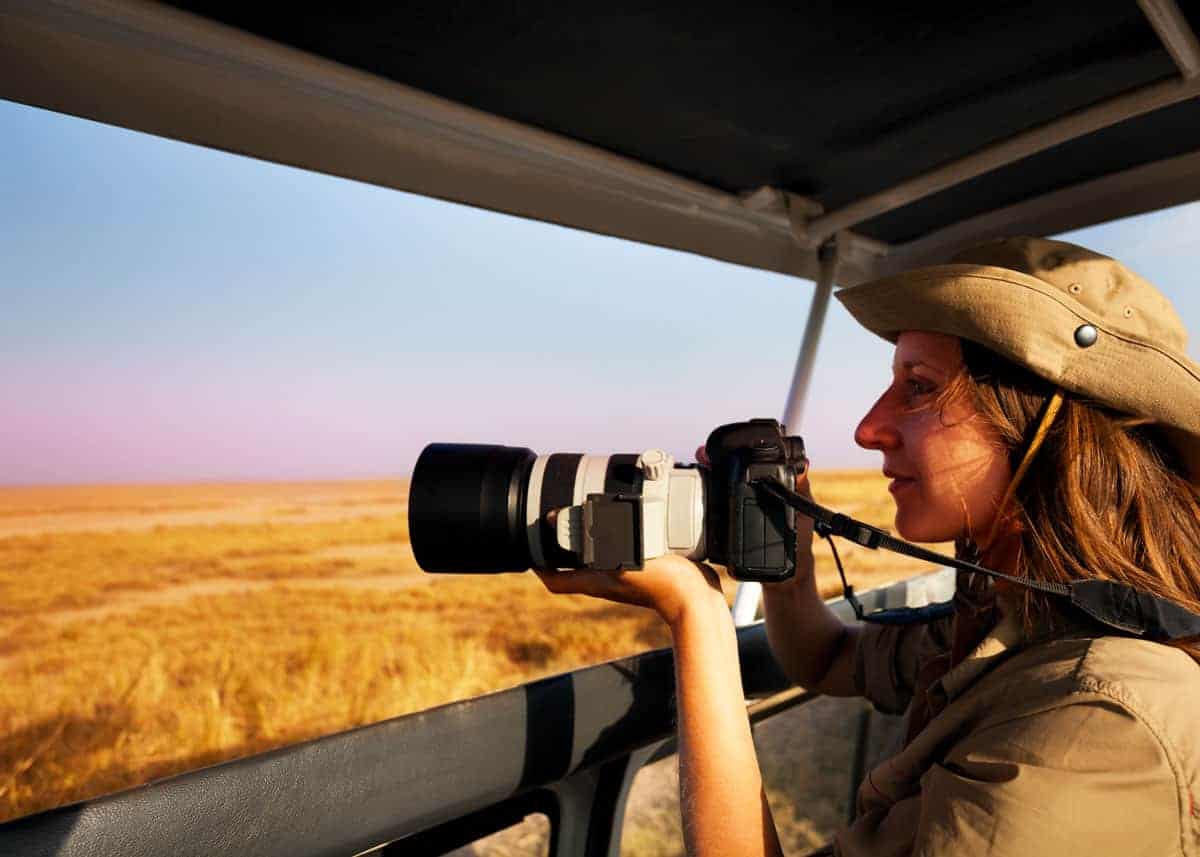
9. Cost
If you are going on an African safari, chances are the trip is already a significant investment. We believe that your camera should also be a decent investment.
They say a picture is worth a thousand words and that goes double in this situation. However, you don’t have to spend a thousand dollars to capture your adventures in a photograph.
There are quite a few high-quality cameras for a medium-quality cost. It’s just a matter of doing your homework and checking for sales. The earlier you start looking the better!
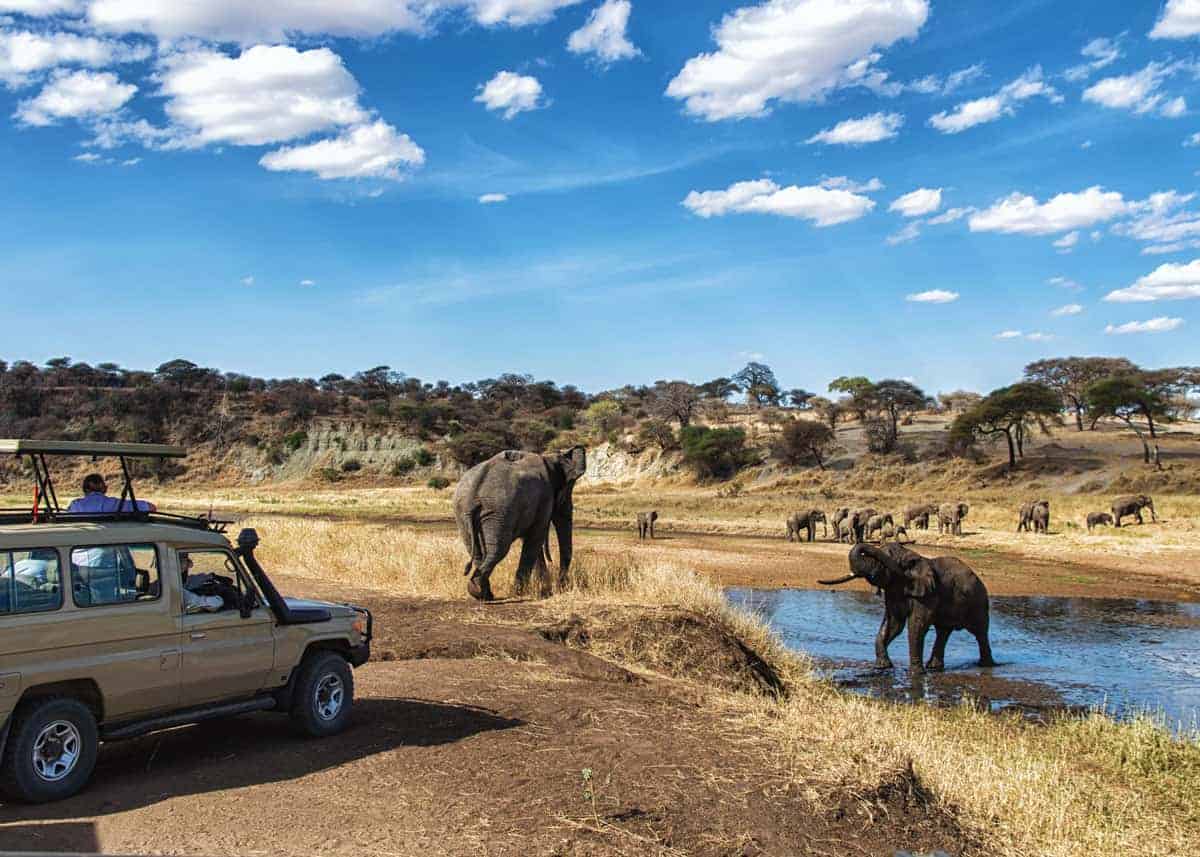
Going on a safari? Here are the 12 best binoculars for the money (Buyers Guide)
6 Types of Cameras for Safari Photography
1. Point and Shoot
Also known as pocket cameras, point and shoots used to be the primary camera type for the average person. Even today this type of camera has managed to stay relevant by adding HD video, 30x zoom, and touch screens.
The greatest advantages the point-and-shoot has over smartphones are the zoom and the settings. You can actually take wildlife photos with 20x zoom or better! Furthermore, the settings allow for changes in light, action scenes, and landscapes.
The downside is that you have to download photos to send them to others or post on social media. Also, the flash is limited so nighttime shots are still out of the question.
Overall, point and shoots are a solid option for safari photography – either as a principal or a backup camera.
Recommended Point and Shoot Camera
Canon PowerShot SX740 is a slim, lightweight point and shoot. It easily slides in your pocket and weighs just 0.66 lbs.
The SX740 comes with 40x digital zoom (24mm lens). It is also Wi-Fi, NFC and Bluetooth enabled. This camera shoots 20.3-megapixel images.
The viewfinder rotates 180 degrees to face the front – allowing you to frame yourself into a great video. Definitely worth consideration.
Check current price on Amazon.
Do I need a selfie stick? In addition to the camera, you might consider a selfie stick. Not only will this help you take great photos, but it will also get you closer to your subject.
A few years ago, I used a selfie stick while visiting the Galapagos – and it made a huge difference. Here’s more about shooting animals with a selfie stick.
2. Smartphone
Cell phones have come a long way in the past few years. Each year’s new release seems to focus more and more on camera quality. In fact, the newest iPhone and Samsung have dual lenses. Smartphones have made some point-and-shoot cameras redundant.
There are a few major drawbacks to choosing your phone as the best camera for safari photography. Arguably the most important is photo quality.
Some smartphones do not do well in low light, because of their short-range flash. Furthermore, the zoom on cell phones is not adequate to capture bush animals close-up. The minimum amount of zoom for good wildlife photos is 20x.
Action shots are also pretty poor quality on many phones. However, there is nothing wrong with snapping a few photos to share when you get service.
The greatest advantage of using your cell phone is the weight, size, and HD video capacity.
Recommended Smartphone
Samsung S20: While there are lots of options, when it comes to phone photography, usually the latest model is the best. The newest model (S22) has some significant improvements. It is rated for up to 5 feet of water, for up to 30 minutes.
The rear camera has an F1.5 lens – perfect for low-light settings. It also shoots 960 fps for super slow-mo. This is definitely a solid backup option.
iPhone 13: Another option is the iPhone X. It is also water and dust-resistant and comes with a 12MP camera.
3. Superzoom Cameras
If you aren’t quite sure what this is, you aren’t alone! Superzoom cameras are characterized by a long, integrated telephoto zoom. This reduces the need to carry a range of lenses, which in turn reduces the amount of weight and accessories you have to take care of.
Furthermore, they have a zoom of 50x to 80x. This produces crisper, closer photos than both the point-and-shoot and the smartphone.
With a little bit of practice, they are also better at action shots than either of the two previous cameras. Additionally, superzooms usually have more settings for more specific situations.
Superzooms are pretty good in terms of safari photos. Like all cameras, there are some downsides.
- First, you can’t fit this camera in your pocket. You can, however, attach it to your belt loops or fit it in your purse.
- Second, steadying a superzoom takes some getting used to. Most people aren’t used to shooting a camera with one large lens.
- Finally, there can be some motion blur when you shoot animals running at far-off distances.
Recommended Superzoom Camera: 60X Optical Zoom
Panasonic Lumix FZ80: This small camera zooms to an impressive 60X optical zoom. And it shoots video in 4K resolution.
For photos, this shoots at 18.1MP. To make sure that you get “the shot” you can shoot in 4K Photo Mode. Record photos at 30 frames per second to save the exact moment. Comes with image stabilization. Weight comes in at 1.35 lbs.
Check current price on Amazon.
With such a huge zoom, you’re going to need a tripod or stabilizer. If you are shooting from a vehicle, the Pedco Ultraclamp will do the trick.
I used this to shoot a timelapse video from the top of a double-decker bus on cobblestone streets – with no wobble. This clamp is solid.
4. DSLR Camera
DSLRs produce the best quality photos by far. In fact, once you go DSLR you don’t go back. You can literally capture a bird mid-flap due to the fast shutter speed. If you want to freeze action, this is the best camera for safari photos!
Do you want to take pictures in low light or at night with the clearest image possible? This is the best camera on the list for you! Not only are the photos great, but so are the prints! You will be the envy of your local photography group, as well as your friends. There is no doubt that a DSLR is the best camera for safari picture quality. Nonetheless, they may not be the best for your specific situation.
The worst aspects of digital SLRs are the heavy, costly lenses. They are glass, which makes them weighty and breakable. You may have to sacrifice some items in your suitcase. Also, plan on being bogged down during a walking safari. Even worse, they are bulky.
Surprisingly, the cost of an intro DSLR is about the same as a high-quality superzoom. Yet, it offers so much more.
One great thing about DSLRs is their interchangeable lenses. The different lenses available run the gamut of millimeters, so you know you are getting the best shot possible. Each lens has a cropped sensor for the most accurate frames possible.
For wildlife, choose a lens at least 300mm. Unfortunately, this isn’t the greatest when you need to alternate between lenses quickly. If you do decide to overlook the aforementioned faults, you will be rewarded in some major ways.
Recommended DSLR Camera
Canon EOS Rebel: For most travelers, an entry-level DSLR camera is all they’ll need. Many come with a basic 18-55mm lens. Some also come with a zoom lens (like a 75-300mm).
These will give you the flexibility to shoot at a distance and some wider-angle landscapes.
All the newer Rebel models come with built-in Wi-Fi and NFC connectivity. And they shoot from 18-24MP.
They also shoot great videos.
Check current price on Amazon.
With DSLR cameras, your images are only as good as your lens. Consider buying a basic body and an upgraded lens.
I recently purchased an all-in-one lens for my Canon Rebel. It is the Tamron 16-300mm. At 16mm, it takes excellent wide-angle shots and the 300mm zoom is great for shooting subjects at a distance.
5. Mirrorless Camera
A mirrorless camera is a digital camera that is giving DSLRs a run for their money. These newer products are more lightweight because they literally do not have a mirror.
The lack of a mirror reduces their size considerably. Instead of looking into a manual viewfinder, they feature an LCD screen with an electronic viewfinder. This feature takes out the guesswork of how your photo will look once taken. You get what you see on your mirrorless camera screen because you are seeing the image post-sensor! These are fantastic for beginners, and those not wanting to bother with the weight and bulk of DSLRs.
Recommended Mirrorless Camera
Sony Alpha a6000: Shoot up to 11 frames in one second to capture that animal on the move. This camera shoots at 24MP and comes with a tilting LCD.
Mirrorless cameras come with the quality of some DSLR cameras but at half the weight. Shoot with the world’s fastest autofocus with 179 AF points.
Check current price on Amazon.
Here’s how to power your a6000 camera: Sony a6000 battery guide
6. Action Camera (Yes, I Mean GoPro)
It is lightweight, extremely portable, optionally hands-free, and can take HD video in almost all lighting. Overall, the GoPro is great for having some fun, but it isn’t the best camera for safari photography. Although the close-ups are quite good, they aren’t exactly known for their zoom.
Recommended GoPro Camera
GoPro Hero10 Black: This makes a decent camera for storytelling (b-roll) and for a second camera. While you won’t get any zoom with these action cameras, they are super versatile for chest mounts and on the end of a selfie stick.
The newest version shoots in 5.3K resolution with up to 60fps (allowing for slo-mo).
These are waterproof to 33ft (10m) so rain and dust won’t affect your camera. And it comes with 5GHz Wi-Fi so you can copy photos to your phone quickly and easily.
Check current price on Amazon.
14 Safari Photography Tips
Okay, so far we’ve covered our detailed buyer’s guide and the best types of cameras for safari.
Now, here are a few tips to help you get the best shots when you are out on safari.
Have a tip to share? Let me know in the comments below!
- Talk to other travelers and find out what they saw yesterday. There might a great tip (like a recent lion kill) that will help you find your subjects.
- Check your camera settings before leaving for the day. You don’t know what you might see at the first turn.
- Travel early morning and just before sunset. This is when the animals are most active.
- Don’t forget to bring extra batteries. There is nothing worse than running out of power before the day is over (well, unless you get trampled by an elephant – that might be worse). Just remember to bring along spares – and maybe a way to charge up some more, just in case.
- Wear muted colors. Think tan and olive shades. You can find some recommended safari clothes in our safari packing list.
- Wear climate-appropriate clothing. You’ll regret not bringing moisture-wicking (savannah safari) or waterproof (jungle trek) clothing. Check with your tour company to confirm specifically what you should bring. If you are soaked (either with sweat or rain) it’ll be hard to capture quality photos.
- Bring a bean bag rather than (or in addition to) a tripod. You can shoot from inside the car and get a stable shot. These can be made with a bag of rice and a pillowcase or an old t-shirt. Just pick up these when you arrive in Uganda.
- Turn off your car to avoid unnecessary shaking.
- Use a telephoto lens. You won’t regret bringing the best/biggest one you can find.
- Try to be where the animals are going. This will help you get interesting shots of animal heads – instead of tails.
- Remember that you’re not at the zoo. The animals are not there to entertain you – and they will go where they want. Patience will help you get amazing shots.
- Remember to shoot the fine details. Birds, insects, local culture, and typical food should not be forgotten. There’s more to an African safari than just lions and elephants.
- Bring a shoulder strap. Take the strain off your neck. After a full day of lugging around your heavy camera, you’ll be happy you had a quality shoulder strap. This one by Altura Photo comes with a padded strap, quick release, and a safety tether.
- Respect the animals.
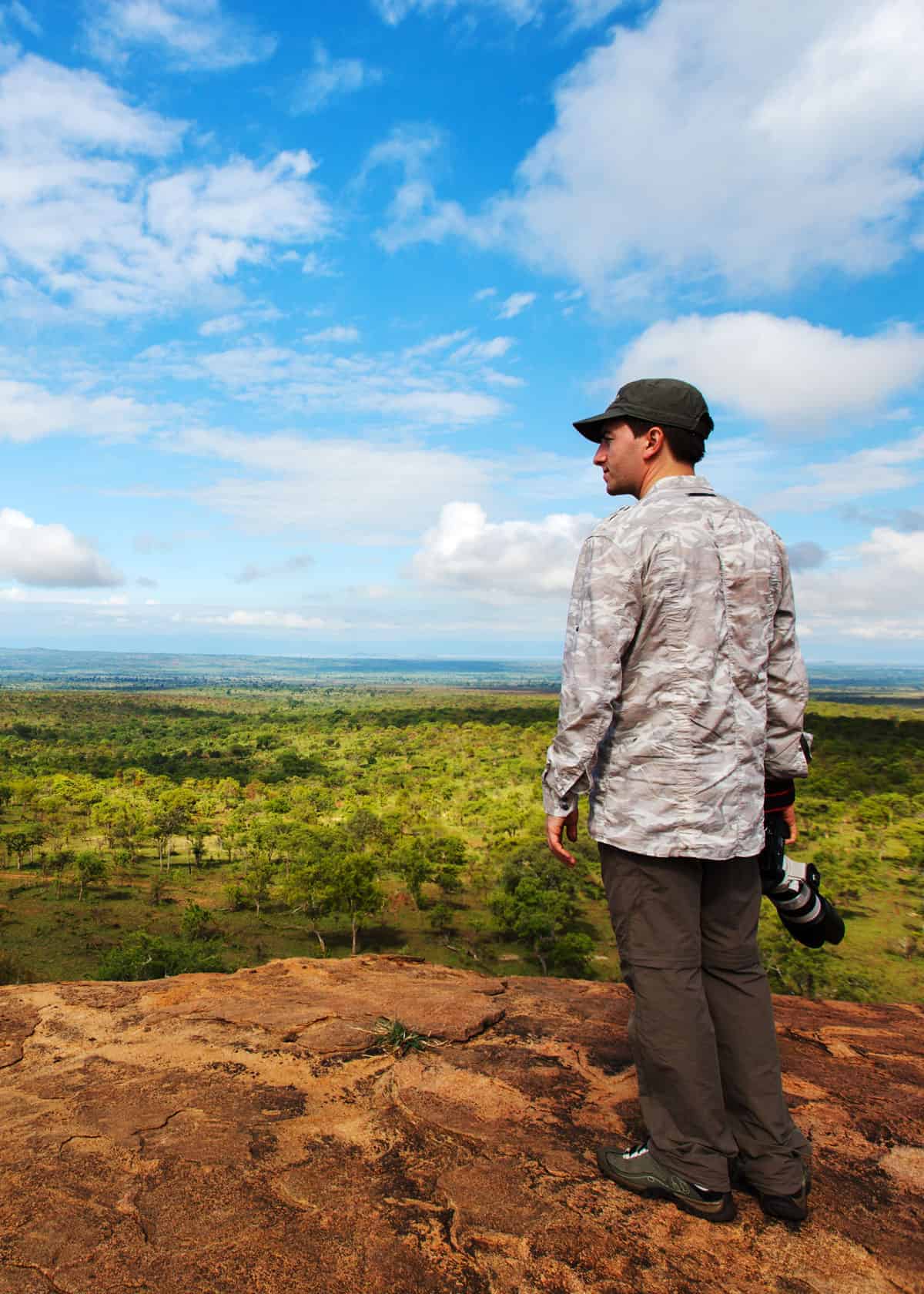
4 Safari Photography Accessories
- Batteries: You’re going to want to bring extra batteries. Most camera models have a great selection of aftermarket batteries – that should save you money and often give you a higher capacity.
Tripod: Hands down, my favorite tripod is the Gorillapod SLR Zoom. This mount comes in a number of different sizes, perfect for small cameras and phones and up to a large DSLR with a zoom lens. In my opinion, it’s best to get the largest and this will work for all your cameras. The SLR Zoom can secure cameras up to 6.6lbs – more than enough for your typical setup. It works great on a door with the window rolled down tree branches and tabletops. While I have three, my favorite is the largest one.
Clamp Mount: The Pedco UltraClamp is my favorite mount. Because it is a clamp, you can put it on benches, trucks, signposts – whatever you like. I once clamped it to the top of a double-decker bus and road around Cuenca Ecuador’s cobblestone roads for 2.5hrs – it didn’t budge! And it holds up to 6 pounds – more than an average DSLR and lens. How much does a DSLR weigh? Most DSLR bodies weigh 1.5-2lbs. Add another 1.3lbs for a 300mm lens and you’re still under capacity (about 3.3lbs).
- There is no end to what lens you might choose. I can recommend the Tamron 16-300mm lens. It is not professional but it certainly isn’t just consumer level. This lens gives a very wide-angle 16mm for those sweeping landscapes and storytelling shots. And it offers a decent 300mm zoom lens – for getting in tight on the (sometimes) shy wildlife. This is my favorite lens.
What about bringing your drone? This is a great idea – you can tell a better story with aerial video. But before you start packing, it would be a good idea to check with your tour company to see what the local laws are.
If you are looking for a recommendation, you might check out the DJI Mini 3 Pro. It shoots 4K video (true 4K video), up to 34 minutes of flight time per battery, and folds to easily fit in your pack.
I don’t have one yet, but it’s on my list.
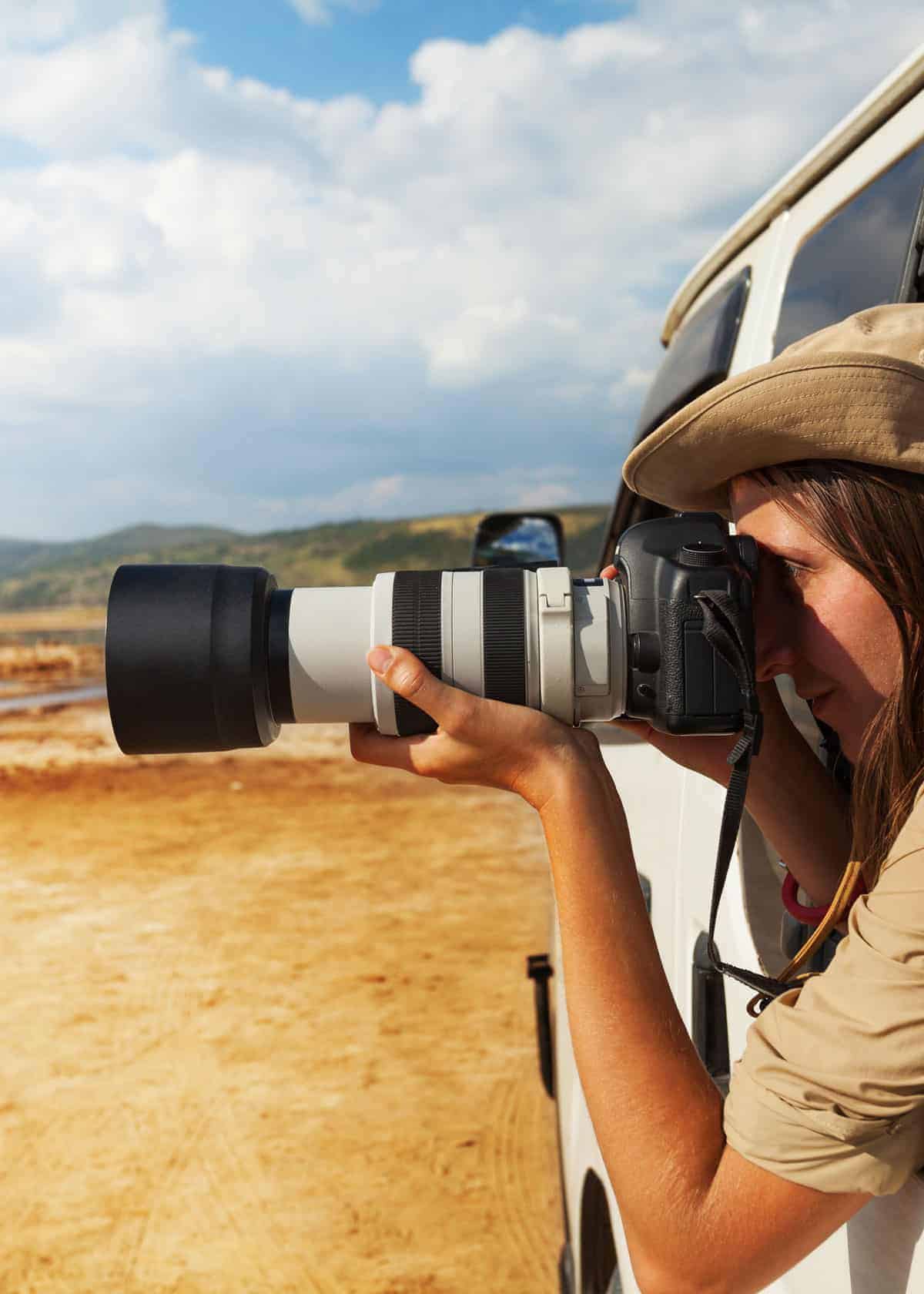
What’s Your Best Camera for Safari Adventures?
When picking your best camera for safari fun, you’ll need to decide which factors (FPS, zoom, weatherproof, weight and size, and cost) matter most to you.
Although there are many different cameras on the market today, there are a few types that represent all of these qualities well.
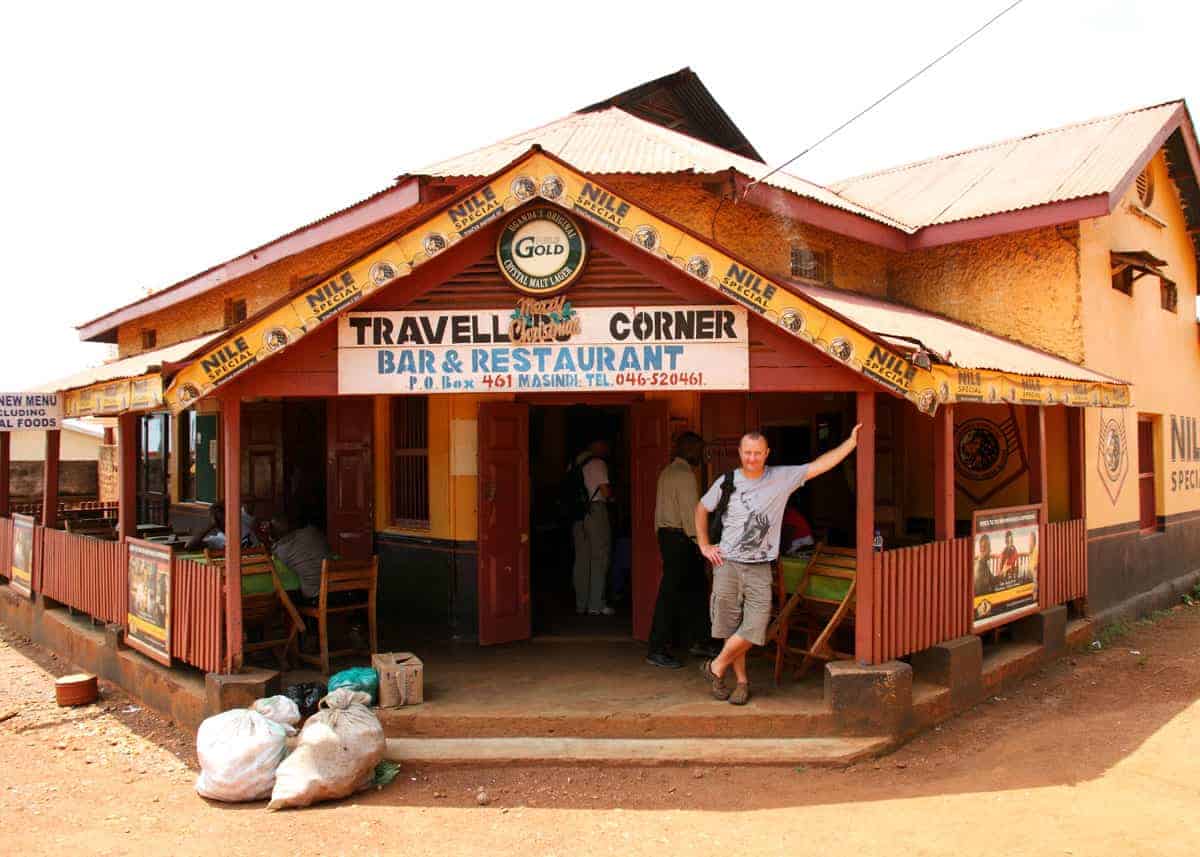
Which camera(s) are you planning on shooting with on your trip? Have a safari photography tip? Join me in the comments.







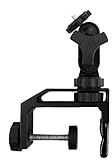

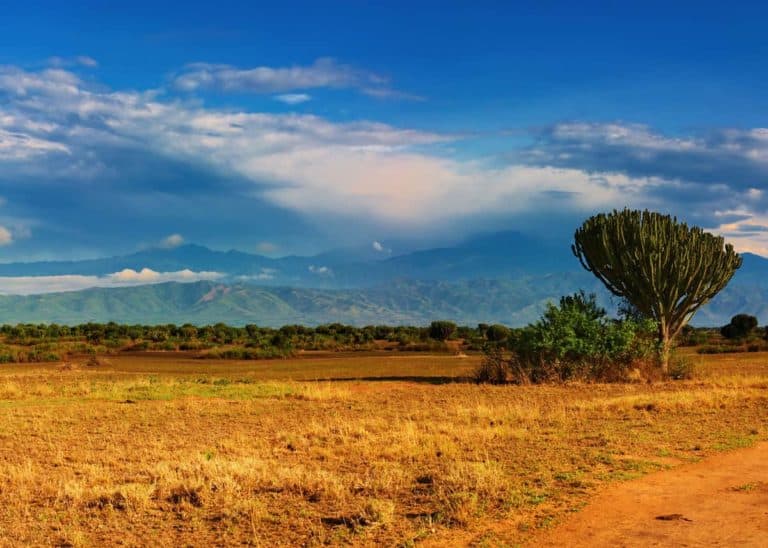



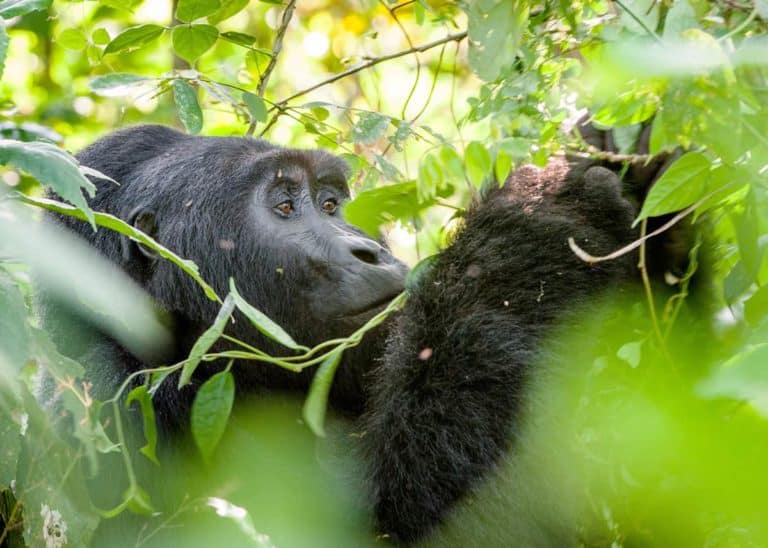
With zero photo experience I am looking at a point and shoot camera with a viewfinder to use with my eyeglasses for a safari to Africa. Which of the Sony HX80 and the Panasonic ZS70 would be the easiest to use? Betty
These are almost identical specs. I think for a beginner, I would lean towards the Panasonic ZS70 for two reasons: 1. Their “4K PHOTO” feature lets you catch the best moment at 30fps and save it as an 8-megapixel-equivalent high-resolution image. This is great for shooting wildlife with video and extracting photos after. And 2. It shoots video in 4K (super high res).
Hope this helps!
Thanks Bryan. Your site is such a great planning tool for all aspects of Safari travel.
Thanks Betty.
All the best on your plans!
I notice that you recommend the Canon Powershot SX730. How does the camera work in bright sun without a viewfinder? Are there other tradeoffs that make the Canon Powershot a better choice than the Panasonic ZS70?
@Betty MCCAULEY, Did you travel to Africa? If not, I suggest that you don’t take any safaris without being very familiar with your camera of choice before you leave.
Get to know it so when those great photo opps appear, you can get the shots you want without having to fiddle too much with the camera. Learn before you go.
Bryan,
I am going on a Botswana safari and considering a Bridge Camera.
The Canon SX70 and Panasonic FZ80 do not include weather protection.
Is that a problem for the sandy conditions?
Would it be better to go with the Panasonic FZ300 which includes weather protection? Don
Dustproof is a great feature. It takes away much of the worry – and lets you focus on your photography. I think the FZ300 would be a great choice.
All the best on your trip!
Hi,
I am going on my first ‘safari’ in August 2019. With a tour, we will travel from the Victoria Falls in Zimbabwe through Botswana and Namibia to Cape Town in South Africa.
To capture this special trip, I would like some tips on what camera to buy.
I am just a beginner photographer, and not keen on bringing lenses.
Can you help me out?
Cheers!
Either a superzoom or a point and shoot will be great – both have integrated lenses and are great for beginners. Look for the highest optical zoom you can afford. For example, the Panasonic Lumix FZ80 comes with a 60X zoom (equivalent to a 20-1200mm lens).
Have a great trip!